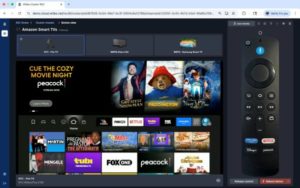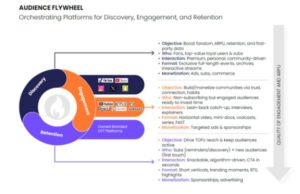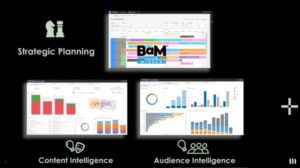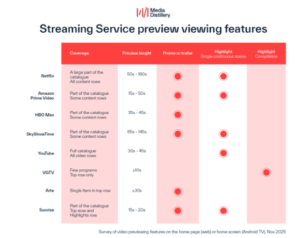Today’s consumer has an insatiable hunger for video content at any time, creating a vast streaming media ecosystem. To serve enough ‘bread and games’ to the masses, OTT service providers must cover numerous platforms, including iOS, Android, web, set-top boxes, TV dongles, and smart TVs. This buffet of platforms has led to many headaches for OTT service providers integrating a video player into their applications.
Video player architects have largely accepted that to ensure identical cross-platform functionality and aesthetics, a proverbial panful of spaghetti code must be written on top of platform-specific or open-source players. And it doesn’t end there—it needs to be maintained as well. This overhead eats into the already tight margin of the OTT service provider and complicates the addition of new features. Innovations like multiview streaming, personalized and interactive ad insertions, and seamless social media integrations are setting new norms in the streaming industry, driving engagement, growth, and new revenue.
If this introduction hasn’t made you too hungry yet, let’s examine the best way to bake a true cross-platform and innovation-friendly video player ‘cake’ below.
Taking Your Video Player Stack Down a Level
The current standard for a cross-platform video player stack often relies on open-source or OS-specific platform video players, with a unifying wrapper built around them by the video player vendor. Since these players behave differently and have varying feature sets (e.g., DRM), this approach still requires significant application-level code to manage differences across supported platforms. As the number of features in the application increases, the lines of code needed to keep everything working expand drastically. Typical players build on AVPlayer for iOS, Exoplayer for Android, MSE for web browsers, etc. Innovations are then developed on top of these platform-native players, and on top of that, you have the API and UI layer.
But what if instead of 10,000 lines of application-level code, you only needed 20 lines to ensure consistent behavior across platforms? This is possible with a cross-platform player developed from the ground up, handling all networking, buffer management, and video playout logic directly, bypassing the platform-native players. In other words, the video player’s code base sits right on top of the hardware decoder, ensuring consistent behavior on all platforms.

The Different Approaches to Building a Video Player
Let’s Look at How a Cross-Platform Player Stack Benefits OTT Service Providers
Peeking into the Kitchen
Cost, time, and control are key factors guiding OTT service providers’ internal structures. A cross-platform player can improve all three factors. Companies servicing multiple platforms can save precious resources by reducing platform-specific code, speeding up time-to-live for launches and upgrades, providing consistent error reporting and analytics, and enabling a single format for encoding and packaging video (including captioning and thumbnails!) across all target platforms. Implementing third-party integrations (e.g., for ad systems, quality metrics, error reporting) only needs to be done once instead of per platform. Given that (live) content rights, production, and distribution costs are significant in this competitive market, minimizing platform-induced complexity makes a lot of sense.
Feast Your Eyes on Innovative Streaming
A key element for streaming platforms is presenting a product that is appealing and looks the same across devices. Viewing time is precious and finite, so offering a product that is consistent across platforms is vital for earning that 5-star review. Innovations like multiview streaming can drive new growth and revenue, especially for live sports, but are challenging to implement across multiple platforms. A player built from the ground up is the secret sauce, handling all the heavy lifting in terms of pixel placement, ABR level assignment for each viewing window (PiP), and keeping all feeds in sync. Time-to-live for deploying a multiview product is much faster with a player originally designed for this purpose, compared to relying on platform-native players.
Additionally, advertisements are crucial to many business models in the industry. Integration of personalized ad insertion solutions becomes much easier when a cross-platform player supports them across your entire viewer base. Personalized video ads can be shown as PiP or side-by-side in a multiview setup—or in any other configuration an OTT service provider envisions. This creates exciting new opportunities to display ads and improve revenue.

Multiview: Hard to Serve, but Tastes Like More When Done Right
An Appetizer at IBC 2024
IBC-visiting readers with an appetite for advanced player technology can sample a true cross-platform video player by visiting the D2C area of the AWS booth, Hall 5.C90. See the Tiledmedia video player showcasing a fully personalized and engaging multiview experience. For more information, visit our website at www.tiledmedia.com.









